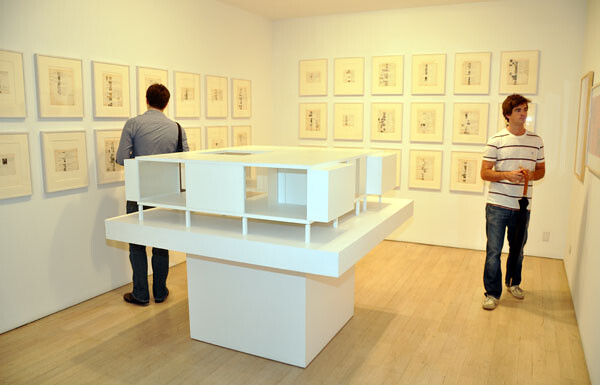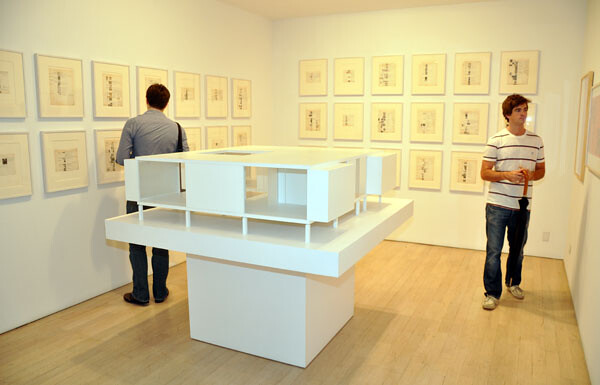The birth of the curator has led to the death of the artist. Or, at least, that’s the impression one gets from a gloss of the current literature on exhibition practices. Concerns percolate that the expanded portfolio of the curator now encroaches on the artist’s autonomy. Yet it’s important to survey the situation from the opposite direction as well: changes in curatorial practice have long been preceded by those in artistic practice. Since at least the early 1960s, the very category of artist has come under considerable pressure. The famous texts on authorship by Barthes and Foucault were only the theorization of a multi-pronged attack well underway. One such campaign was mounted by George Maciunas, the focal point of two exhibitions in New York this autumn: “Mr. Fluxus” at the Stendhal Gallery and “Out of the Box” at the Emily Harvey Foundation. Maciunas’s example is especially relevant, since he devoted himself so extensively to collective organization, production management, and bureaucratic wrangling—that is, the very spheres of activity where today the agency of artist and curator grow indistinct.
As Julia Robinson has observed, Maciunas is routinely characterized as the impresario of Fluxus, which is more of a dodge than an accurate description. It avoids dealing with his diverse endeavors and polymath expertise in any specificity. At the Stendhal Gallery alone, Maciunas emerges as a graphic designer, architect, art historian, and real-estate entrepreneur. This madcap heterogeneity is Maciunas’s challenge: to borrow Foucault’s term, what “author function” assigns these activities to a single coherent artistic identity? For instance, the centerpiece of “Mr. Fluxus” is every page of An Anthology, a collection of scores, essays, and poetry, edited by La Monte Young. No single piece in An Anthology can be solely attributed to Maciunas. Instead he acted as designer, sifting the individual contributions through the IBM Executive typewriter font and vigorously jumbled title headings that came to dominate Fluxus’s printed matter. This technically monographic exhibition thus contains a multiplicity of authors. Such operations within the interstices of others’ artwork didn’t necessarily lack friction. This much becomes evident in an art-historical chart Maciunas devised to outline Fluxus’s own development—particularly in the section that accounts for artists who ultimately distanced themselves from the movement (or, more accurately, from Maciunas’s personal vision for it). The objective tone of the scholar buckles as he characterizes these artists’ motivations as “anticollective attitude, excessive individualism, desire for personal glory, prima dona [sic] complex.”
Needless to stay, An Anthology was not originally intended for gallery display, nor did Maciunas ever privilege the exhibition format. In a 1962 statement, he positioned Fluxus across a range of “time arts” and “space arts”—”literary arts (time art), through graphic-literature (time-space art), to graphics (space-arts) through graphic music (space-time arts) to graphless or scoreless music (time art), through theatrical music (space-time art) to environments (space arts)”—without hierarchy. “There exist no borderlines,” he wrote, “between one and the other extreme.” A particularly indeterminate status belongs to the trove of Maciunas’s slides bequeathed to Jonas Mekas and recently unearthed by Liutauras Psibilskis, the curator of “Out of the Box.” Psibilskis invited Peter Coffin, Amy Granat, Matt Keegan, and others to respond to the discovery’s contents, thus extending Maciunas’s collaborations into the twenty-first century. Inspired by photographs of Ginger Island, which Maciunas had planned to purchase and convert into a Fluxus commune, Olivier Babin and Harold Ancart devised the most ambitious of the featured works. Since the island is purportedly still for sale, the duo have declared the Ginger Island Purchase Fund to raise the twenty million dollars necessary. They are collecting donations in a cardboard box which, when I visited the exhibition shortly before it closed in late September, contained a few crumpled dollar bills. It’s a modest start, but a productive inheritance from a complicated legacy.








